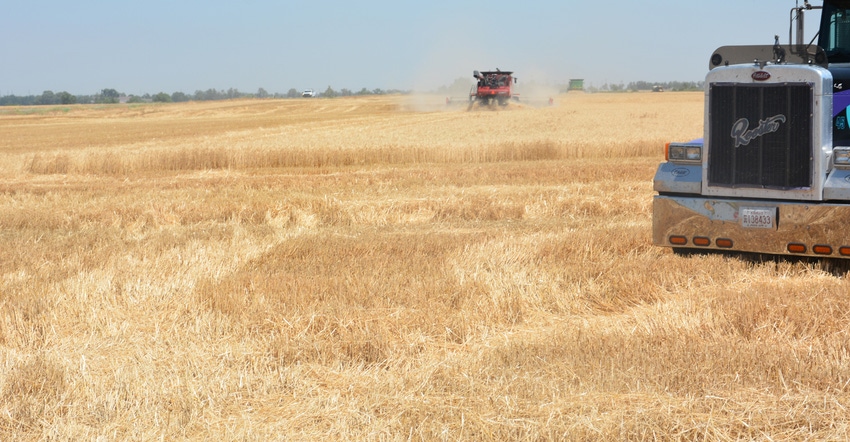February 26, 2021

Kansas farmers saw net farm income increase in 2020 due in part to government payments and higher grain prices.
Kansas farms appear to be moving out of the shadow of the global pandemic, according to two Kansas State University agricultural economists. Ad hoc government payments made because of COVID-19 and higher-than-expected grain prices since last summer boosted average estimates for 2020 Kansas net farm income to $137,000, a 7% increase over $128,000 the previous year. While these results are preliminary, K-State economists will have final numbers from the Kansas Farm Management Association at the end of May, and the figures appear promising.
Doing a 180
The positive farm financial outlook is a far cry from what was expected late last spring.
In May 2020, an initial estimate of members found an anticipated 87% drop in net farm income, according to Gregg Ibendahl, K-State Research and Extension agricultural economist.
“At the time, COVID-19 was starting to spread across the U.S., and the economic effect on much of the country was devastating,” Ibendahl says. “Prices for both grains and livestock had dropped, leading to questions about how severe the crisis might be for farmers.”
Since then, the profitability position changed course. The Coronavirus Food Assistance Program provided $23.6 billion to producers through the first two rounds of the program to help both livestock and grain producers affected by the pandemic. And grain prices are now at levels not seen since before the pandemic.
Farmer input
In developing their estimates, Ibendahl and Extension agricultural economist Dan O’Brien addressed seven major areas, including yields; prices; crop acres; expenses; crop insurance; government payments from the farm bill; and CFAP, or ad hoc, government payments. Each area was projected down to the farm level to estimate net farm income for each of the 588 KFMA grain farms for 2020 and 2021.
“While it originally appeared that COVID-19 was going to play havoc with net farm income, the average grain farm at least will come through the year [2020] with higher profitability,” Ibendahl says, but adds that not all farms will weather the market effects of the pandemic as well as the average grain farm.
Both men agree that net farm income in 2021 could increase another 35% to $185,000, based on futures prices. Those projections are uncertain, however, and hinge at least in part on whether futures prices translate to actual higher farm prices, and if rainfall amounts are normal enough to allow for average yields.
The team also warns that the Western U.S. is in a La Niña drought, so the prospect of average yields is questionable. In addition, higher grain prices tend to lead to higher expenses for fuel, fertilizer and seeds, which could cut into farm profitability.
The full preliminary report is available online. A more complete analysis of 2020 Kansas net farm income based on KFMA data will be available this spring.
Source: K-State Research and Extension is solely responsible for the information provided and is wholly owned by the source. Informa Business Media and all its subsidiaries are not responsible for any of the content contained in this information asset.
You May Also Like




